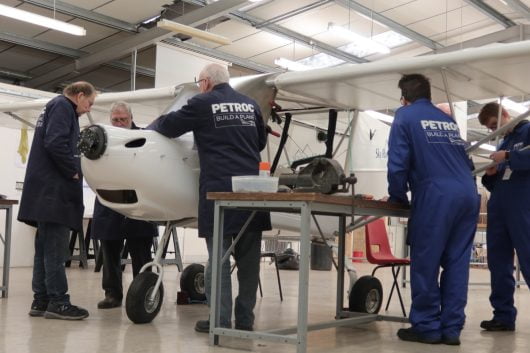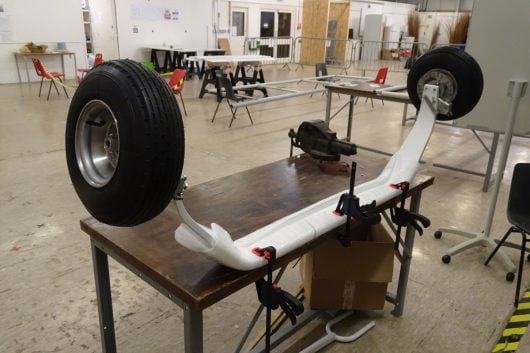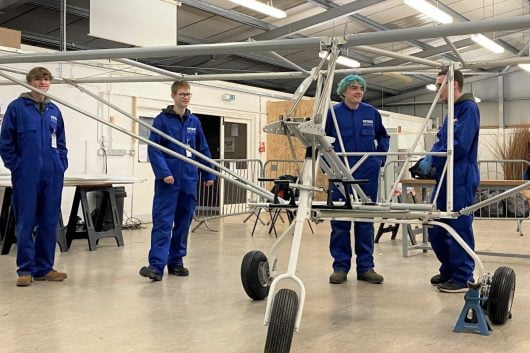Building a plane is a serious enterprise. The most important priority is safety. For that reason, everything we do is regulated by law. Unlike computers or phones, which people start using without looking at the instructions, everything in a plane build has to be done strictly to the plan.
The build manual is 300 pages long and is divided into 92 sections. Each section has plans, photographs and instructions and exact details on materials and tools and how they must be used. Students read the work unit, gather the materials and tools and then follow the instructions to assemble the parts. Every washer, nut and bolt must be assembled exactly in the order described. When a work unit is completed it is inspected and signed off. If even one washer is in the wrong place, the assembly comes apart and we start again.
In a world that delivers instant gratification, students are learning the virtue of attention to detail and patience. In aviation engineering there is only one way to do it; the right way.












Dave Karniewicz oversees the overall build and leads on the Cabin and Engine. Roger Burge leads on Wings & Fuselage. Dave and Roger are pilots and plane builders.
Andy James, a highly qualified electrical engineer, leads Instruments and Electrical systems.
Karl Moore, an engineer at TDK, keeps us in line with current engineering practices.
Dave Vogler (a retired RAF engineer), Mike Simpkins, and Nick Peace (retired civilian engineers) provide vital support.
Ken Charman, a retired CEO and John Dixon a project manager take care of finance and administration.

The build occurs as Petroc College enrichment activity on Wednesday afternoons and via “Buildathons” during college holidays. Every work session begins with “suiting up” into overalls.
Then we have a five-minute “stand-up” (standing in a circle), covering health and safety, then a progress report on the project plan (work units completed, work in progress and how many still to go). Then everyone has a chance to express their opinions about the last session and what they are about to do in this session, finally we consider potential risks, blockers and solutions. We then divide into teams to carry out the work.
Build-a-Plane works to a zero defects standard. This is aviation. Perfect is the only grade.

Many kit planes are built by one person over a number of years. We have compressed this timeline into one year by using three teams who work simultaneously:
1. Cabin and Engine,
2. Wings and Fuselage,
3. Instrumentation and Controls.
Petroc College has provided the perfect space to operate in this way. It is secure because we need to ensure the plane is not tampered with or damaged after we have signed off a phase of work. And we have dedicated rooms for stores and tools and an assembly area big enough for the whole plane to be assembled under cover.
Each team has a home base with benches to lay out components and prepare sub-assemblies and a flip chart to help discuss how we work and record lessons learnt and questions as we go.
